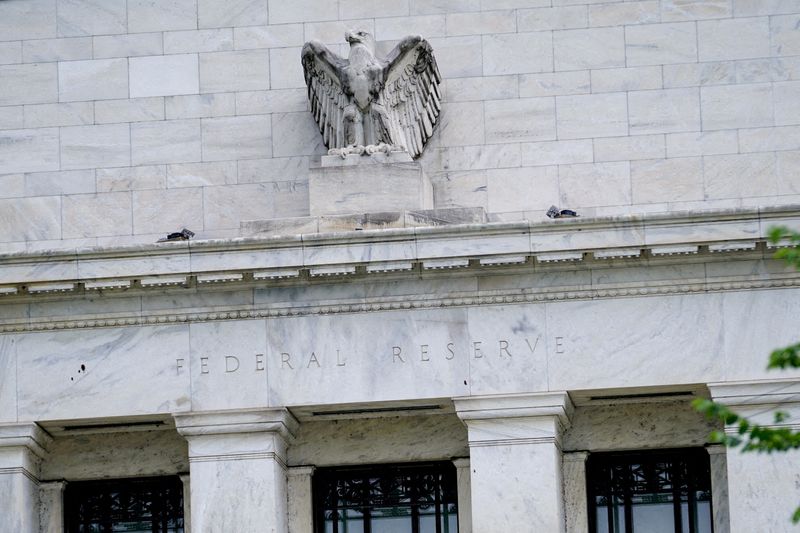By Paritosh Bansal
(Reuters) - Bond vigilantes' violent reaction to spendthrift French politicians is an important reminder for the United States: the market will likely determine the tipping point for debt sustainability, and it will be hard to predict it.
Over the past few months, financial executives and investors have increasingly been in my ear about growing U.S. fiscal deficits. But despite the hand-wringing on Wall Street, bond markets have been relatively sanguine about the issue, focusing instead on the Federal Reserve rate outlook, inflation and the economy.
That's because while many of these people say debt will eventually prove to be problematic if not addressed, any reckoning looks a few years out, thanks to U.S. economic strength and the enduring attractiveness of its markets.
The French experience, however, where worries about fiscal plans sent yields spiking, should serve as a cautionary tale of how bond vigilantes who check government profligacy can suddenly wake up from stupor. And the risk of something like that happening in the United States in the coming months is increasing, with some people expecting policy outlook to start making its way into the market calculus following the first debate between Joe Biden and Donald Trump later this week.
One senior financial industry executive who has been alarmed about deficits for the past several months said the signal that debt had hit an inflection point may well come from the market.
That could come as investors start paying more attention to policy discussions from the two parties, something "that probably starts shortly after the debate," this person said.
An administration official said while no one could predict the point at which it becomes a problem, he, too, had heard worries about debt sustainability from market participants.
"There's no question that we have a medium-term debt and deficit sustainability challenge," the official said. But he added that President Biden had a plan to cut $3 trillion in deficits in 10 years to bring the situation under control.
The Trump campaign did not respond to a request for comment. The former president has talked about cutting taxes but raising tariffs and reducing waste in the federal bureaucracy.
MARKET'S MOOD
A market flare-up can be problematic and have far-reaching consequences, especially if it is sustained. Investors expect the Fed, for example, to start cutting rates later this year. If something spooked bond investors about debt sustainability, yields would rise, undermining the central bank’s efforts to ease the economy to a soft landing.
Earlier this month in France, market ructions following the decision to call snap elections hit government funding plans and bank stocks. It was also blamed for the delay of sneaker maker Golden Goose's IPO.
To be sure, the episode has been less dire than the 2022 U.K. bond blowout, as my colleague argues any sustained bet against French government debt can only hinge on a belief in the improbable end of the euro. Any reaction in the United States would have similar counterweights.
Robert Tipp, chief investment strategist and head of global bonds at PGIM Fixed Income, said any impact on markets would depend on the mood investors are in at the time.
"The market's in a good mood right now," Tipp said. "Everyone's convinced that the Fed's rate is going to be going lower, and they want to lock in these yields for a long time."
But he added that in a bearish environment, debt worries could lead to a 40-80 basis point move in Treasury yields.
BALLOONING DEFICITS
The scale of the problem only appears to be getting bigger. Last week, the Congressional Budget Office increased its cumulative deficit forecast for the fiscal 2025-2034 decade by $2.067 trillion over what it had projected in February.
Investors have been paying attention over the long term. PGIM's Tipp pointed to the difference between the 30-year Treasury bond yield and an interest rate of the same tenor, called SOFR swap, which also carries low credit risk like government bonds but is not affected by debt levels that increase the supply of Treasuries.
In a sign that investors have been charging more for the mountain of debt that the U.S. government has been issuing, 30-year Treasury yields are now about 75 basis points higher than the SOFR swap.
Tipp said such spreads used to be the other way round until the financial crisis of 2008, but flipped over the following decade as debt levels increased rapidly.
In comparison, yields on 10-year German government bonds are 14 basis points lower than the equivalent interest rate in Europe, called ESTR swap, reflecting in part Berlin's better fiscal discipline.
I asked the industry executive what their conversations had been like with others in the market. The executive requested anonymity to speak candidly without worrying about any blowback to institutions with which they are affiliated.

If a survey were to be conducted, the executive said, many people would say debt would become a problem within the next five years – a number that may double over a 10-year horizon.
"There are those that are like, 'This is going to come back to bite us hard,'” the person said. "But no one's been rewarded for making that bet yet."